Yu-Hsuan Kuo
Dynamic Graph Representation Learning for Depression Screening with Transformer
May 10, 2023Abstract:Early detection of mental disorder is crucial as it enables prompt intervention and treatment, which can greatly improve outcomes for individuals suffering from debilitating mental affliction. The recent proliferation of mental health discussions on social media platforms presents research opportunities to investigate mental health and potentially detect instances of mental illness. However, existing depression detection methods are constrained due to two major limitations: (1) the reliance on feature engineering and (2) the lack of consideration for time-varying factors. Specifically, these methods require extensive feature engineering and domain knowledge, which heavily rely on the amount, quality, and type of user-generated content. Moreover, these methods ignore the important impact of time-varying factors on depression detection, such as the dynamics of linguistic patterns and interpersonal interactive behaviors over time on social media (e.g., replies, mentions, and quote-tweets). To tackle these limitations, we propose an early depression detection framework, ContrastEgo treats each user as a dynamic time-evolving attributed graph (ego-network) and leverages supervised contrastive learning to maximize the agreement of users' representations at different scales while minimizing the agreement of users' representations to differentiate between depressed and control groups. ContrastEgo embraces four modules, (1) constructing users' heterogeneous interactive graphs, (2) extracting the representations of users' interaction snapshots using graph neural networks, (3) modeling the sequences of snapshots using attention mechanism, and (4) depression detection using contrastive learning. Extensive experiments on Twitter data demonstrate that ContrastEgo significantly outperforms the state-of-the-art methods in terms of all the effectiveness metrics in various experimental settings.
Detecting Outliers in Data with Correlated Measures
Aug 26, 2018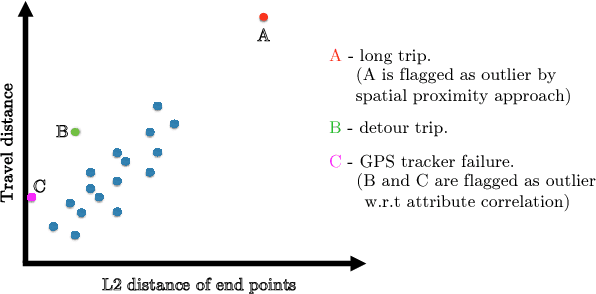
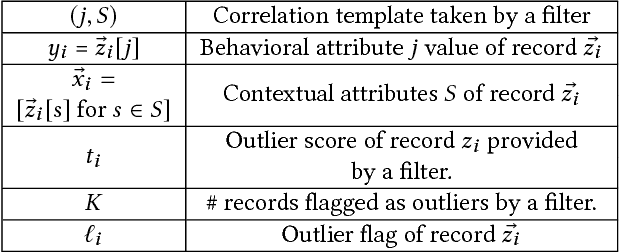
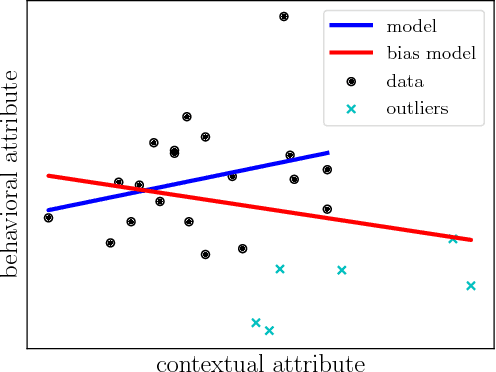

Abstract:Advances in sensor technology have enabled the collection of large-scale datasets. Such datasets can be extremely noisy and often contain a significant amount of outliers that result from sensor malfunction or human operation faults. In order to utilize such data for real-world applications, it is critical to detect outliers so that models built from these datasets will not be skewed by outliers. In this paper, we propose a new outlier detection method that utilizes the correlations in the data (e.g., taxi trip distance vs. trip time). Different from existing outlier detection methods, we build a robust regression model that explicitly models the outliers and detects outliers simultaneously with the model fitting. We validate our approach on real-world datasets against methods specifically designed for each dataset as well as the state of the art outlier detectors. Our outlier detection method achieves better performances, demonstrating the robustness and generality of our method. Last, we report interesting case studies on some outliers that result from atypical events.
A Simple Baseline for Travel Time Estimation using Large-Scale Trip Data
Dec 28, 2015
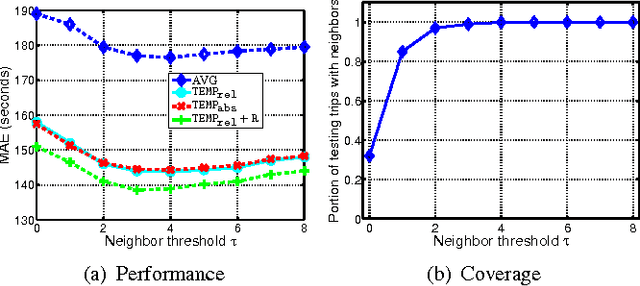
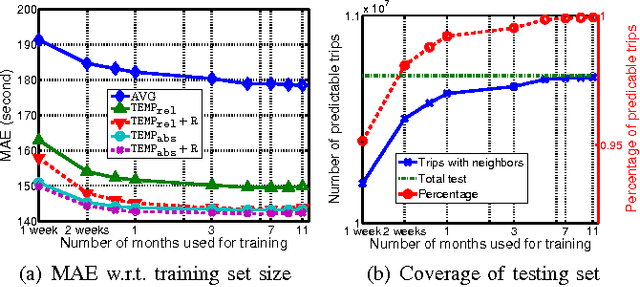
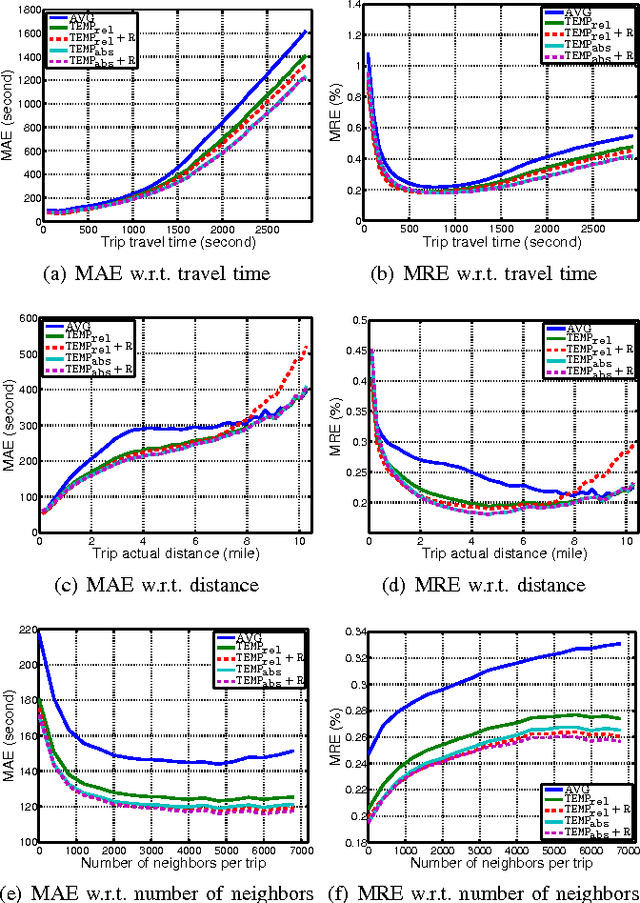
Abstract:The increased availability of large-scale trajectory data around the world provides rich information for the study of urban dynamics. For example, New York City Taxi Limousine Commission regularly releases source-destination information about trips in the taxis they regulate. Taxi data provide information about traffic patterns, and thus enable the study of urban flow -- what will traffic between two locations look like at a certain date and time in the future? Existing big data methods try to outdo each other in terms of complexity and algorithmic sophistication. In the spirit of "big data beats algorithms", we present a very simple baseline which outperforms state-of-the-art approaches, including Bing Maps and Baidu Maps (whose APIs permit large scale experimentation). Such a travel time estimation baseline has several important uses, such as navigation (fast travel time estimates can serve as approximate heuristics for A search variants for path finding) and trip planning (which uses operating hours for popular destinations along with travel time estimates to create an itinerary).
 Add to Chrome
Add to Chrome Add to Firefox
Add to Firefox Add to Edge
Add to Edge